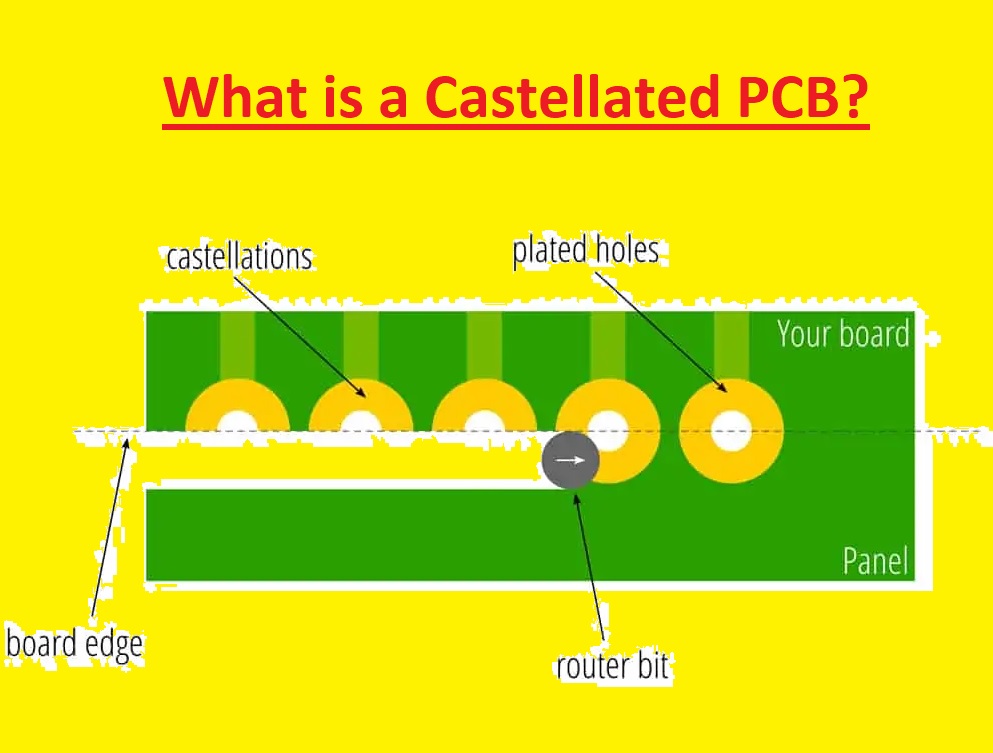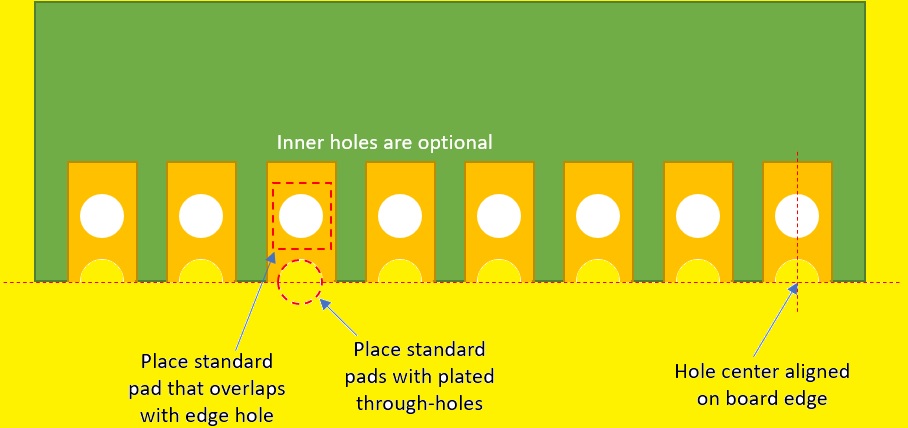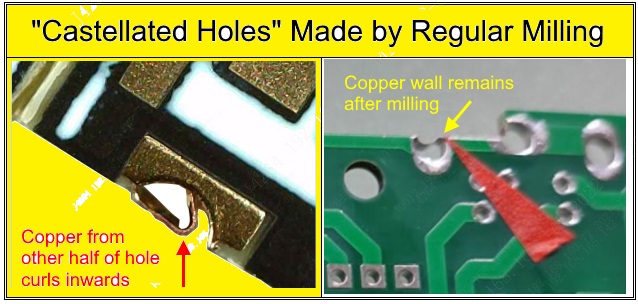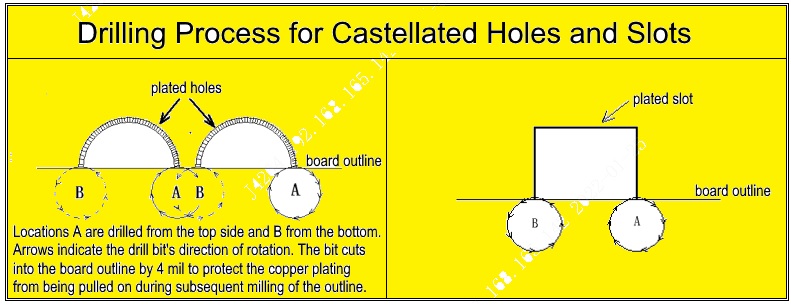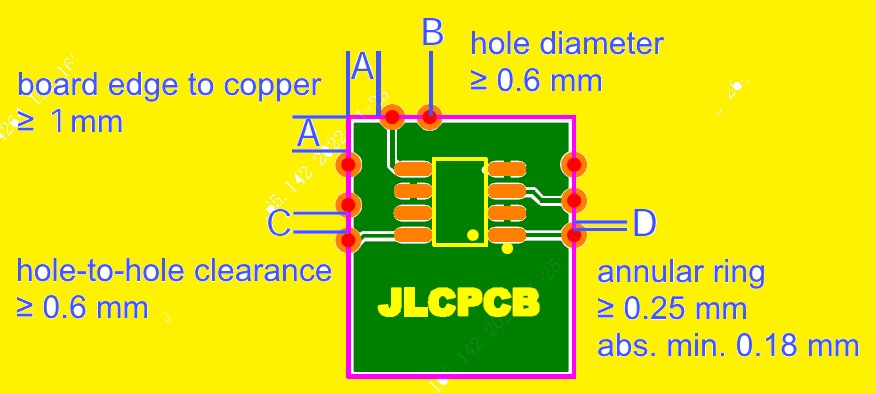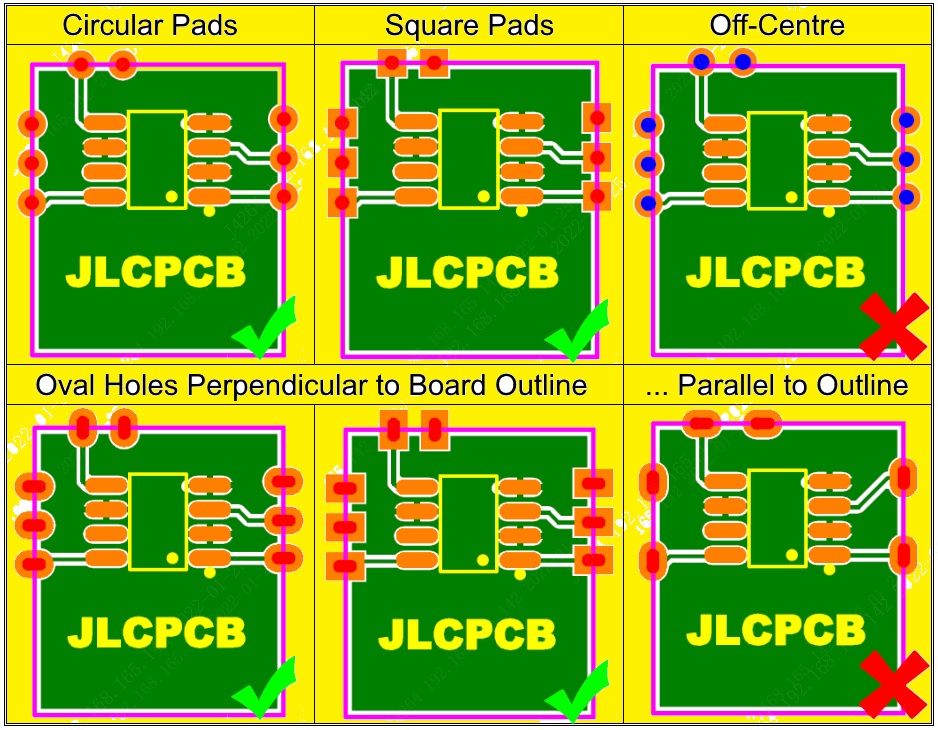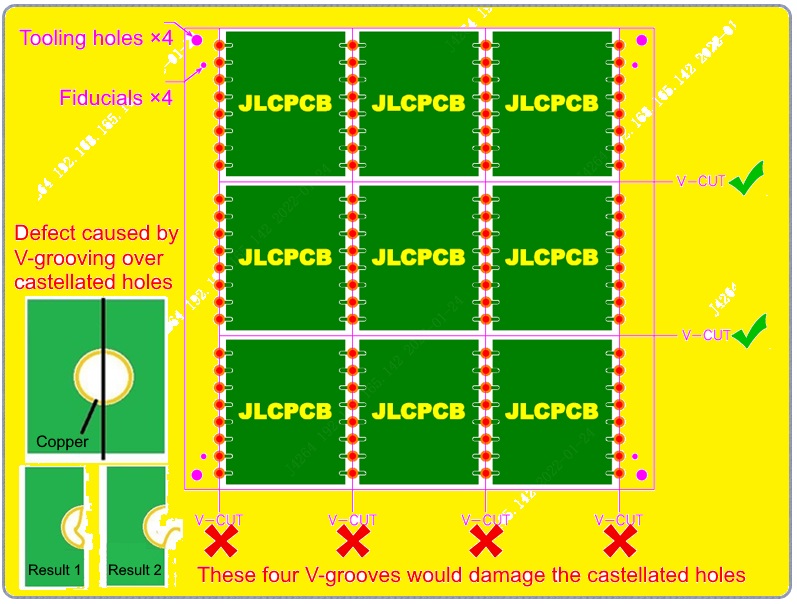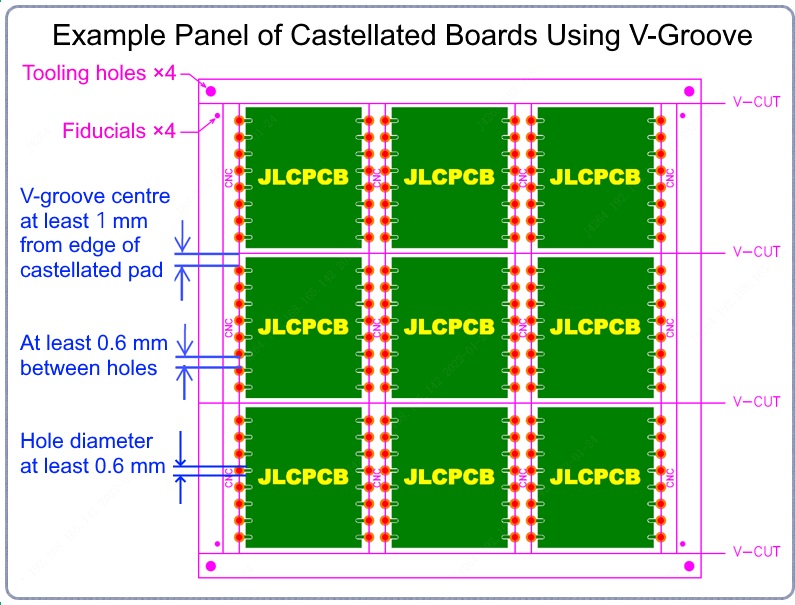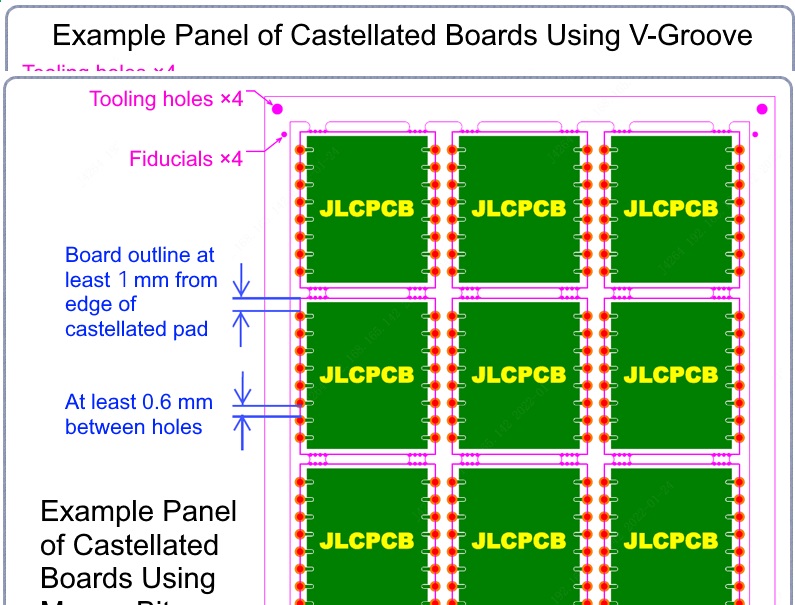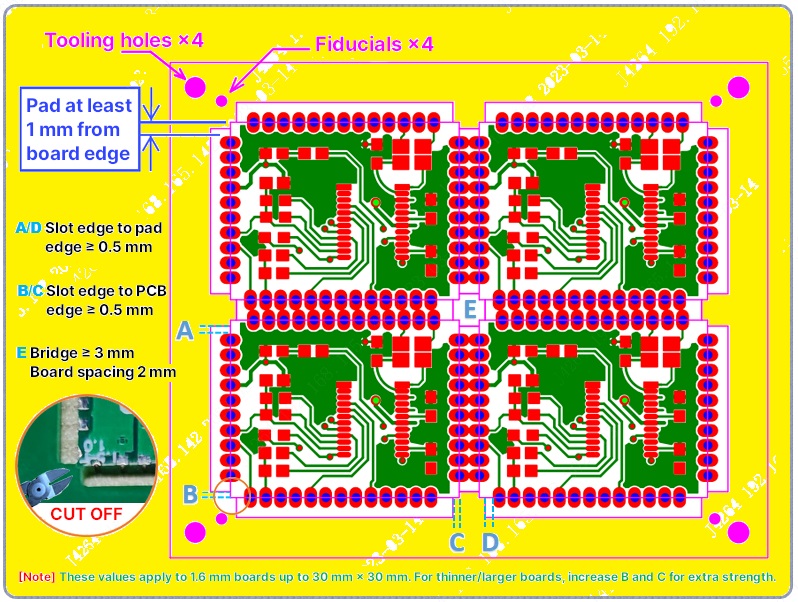Hello readers welcome to the new post. In this post, we will discuss How to Design a Castellated PCB board in 2023. Designing a printed circuit board requires different parameters to make processes according to needs and reliable results. Castellated boards also called half holes or plated holes certain pCB board that comes with plated edges provdies easy integration. . In this tutorial, we will explore the process of designing a castellated PCB with a board. So let’s get started with How to Design a Castellated PCBs Board in 2023
What is a Castellated PCB?
A castellated PCB is PCB type that has plated edges at one or more sides. These plated edges have a pattern of half holes like the castle so they are known as castellated boards. These hald hoes provide a simple soldering process and are mounted on board at each other board to have good integration of components of direct connections
Benefits of Castellated PCBs
- Easy integration: The integration process is simple due to the plated edges of castellated boars
- Space-saving: By reducing the use of connectors, these boards save space in electronic projects
- Robust connections: Plated half holes provdies good and reliable connections to ensure solder joints and mechanical strength.
- Design flexibility: This board helps to place components in different fashions increasing the space used by designers
Design Considerations
Step 1: Determine the Purpose
First of all, must have the objective of board creation. Different parameters such as application, size electrical parameters must be considered
Step 2: Select the Appropriate Software
Choose reliable board design software that has the required features for castellated PCB design. Commonly used software are Altium Designer, Eagle, and KiCad.
Step 3: Create the Schematic Design
Create a design that has all the required functions and connections. Ensure correct labeling and documentation of connection and components
Step 4: PCB Layout
After making the design convert it into a physical structure. Properly connect a component with details of power, signal quality, and heat management.
Step 5: Define Castellations
Now define the points where castellations have to be done on the board. Make sure the difference between castellations and other components to prevent short circuits.
Step 6: Verify Design and Manufacture
Perform design rule checks and electrical rule checks for designing and solving the faults existing. Use the last online HQDFM Gerber Viewer tool to analyze Gerber files and generate an in-depth Design for
Step 7: Assembly and Testing
Get the services of the best PCB manufacturers like JLCPCB to have accurate manufacturing and assembly of the castellated board. Do detailed testing to validate the functionality and reliability of the final result
How are castellated pins created on PCB?
- PCB Design: First of all make a board desing and define the castellated pins on the board’s edge. These pins normally exit with one or more edges of the board
- PCB Fabrication: When the board desing is finished, the designer makes the board according to the design. Once the PCB design is completed, the manufacturer fabricates the PCB board according to design specifications. The plating and milling processes used to make castellated pins
- Drilling: Holes are drilled close to the edge(s) of the board, where the castellated pins are configured. The size and shape of these holes are mentioned in the board design.
- Plating: Holes are plated for good electrical conduction and quality of structure. In plating deposition of conductive materials like copper is made in drilled holes. This plating makes castellated pins.
- Separation: Now the board passes through the separation process. Here cutting board with required edges to make the single board. This process cut the castellated pins, open and ready them for the surface mounting process.
- Surface Mounting: The castellated pins are easily soldered on another board directly. During assembly, castellated pins are aligned and soldered onto the required PCB.
Why should you choose castellated holes on Pcb?
- Surface mounting: Castellated holes PCB comes with a simple process for surface mounting the board on another board. Exposed pins can easily soldered directly on the component without the use of connectors
- Space-saving: These holes provdies the compact desing. best for application where space is limited
- Simplified assembly: it also makes a simple assembly process by reducing the use of connection and also reduces assembly time and cost
- Robust mechanical connection: it provdies a strong connection between component and board. Plated pins have good stability and a durable nature SMT
- Electrical connectivity: The castellated pins make reliable electrical connections between the board and the components. They provdies direct conductive paths to make a sure accurate transmission,, and reduce signal degradation or interference.
- Design flexibilityIt provdies flexible design and helps to make unique board form factors and make innovative product designs.
- Cost-effective solution: The not use of external component makeover cost-effective board
Castellated PCBs Manufacturing Techniques
Manufacturing defects in metalized castellated holes, like copper plating peeling, and warping, have long been a problem in the production process. Castellated holes with copper burrs can cause physically and electrically unstable solder connections. It can also result in short circuits between neighboring pads in extreme circumstances.
Castellated holes are drilled and plated in the same way as standard PTHs, but the tricky part is getting the opposite half of each hole out without damaging the first or leaving extra copper behind.
Here detailed process for castellated holes PCB used JLCPCB explained
All of their drill and milling bits must approach the board from the proper side while rotating clockwise to make sure that any copper plating is always pressed against and never withdrawn from the backing wall. This ensures that the undesirable half of the copper ring is correctly and neatly cut off, leaving the other half intact. The JLCPCB’s castellated process has reached a mature state of refinement. The current technique initially plates and drills the holes as it would for conventional PTHs, and then performs a 2nd drilling/milling pass to remove one-half from each hole while leaving the plating on the other half in situ.
Although this technique is more difficult than manufacturing ordinary PTHs, it was created to find that are accurate and pure. Castellated boards are more costly to produce due to the additional drilling process and the fact that they are often small and hence more difficult to handle.
Certain Requirements for Design
Basic Dimensions
| Dimension | Minimum |
| Board size | 10 mm × 10 mm |
| Board edge to castellated pad (A) | 1.0 mm |
| Castellated pad drill diameter (B) | 0.6 mm |
| Hole-to-hole clearance (C) | 0.6 mm |
| Annular ring (D) | 0.25 mm (absolute minimum 0.18 mm) |
Note: JLCPCB may extend annular rings that are less than 0.25 mm in diameter. Please provide a remark with your order if widths less than 0.25 mm are needed, and choose “confirm production files” to subsequently verify any modifications done.
Pad Shape and Placement
Pads can be either round or rectangular. Only pads with long edges that are parallel to the board edge are permitted. Pads that are centered outside of the board edge are not allowed; they must be offset inward from the board edge.
Panelising Castellated Boards
V-cuts or mouse bites can be used to penalize castellated boards. Notes that regardless of whether they are panelized, JLCPCB does not make castellated boards smaller than 10 mm by 10 mm.
If using V-cuts, note that the cutter damage castellated pads, hence cuts should only be made on non-castellated edges:
V-Cut Panels (Non-Castellated Edges Only)
Mouse Bite Panels
Boards with All Sides Castellated
To realize your PCB ideas, high-quality PCBs are required. At JLCPCB, they are dedicated to upholding the highest manufacturing standards. To do this, they spend money on state-of-the-art machinery and work with reputable raw material suppliers from across the world. This supplier is able to minimize production costs brought on by large-scale impacts on manufacturing thanks to our five clever self-owned production bases, allowing us to provide our clients with accessible prospects for hardware innovation. Additionally, they give every new member up to $54 in registered coupons. Start purchasing premium PCBs by registering and uploading your Gerber files right now at https://jlcpcb.com.


